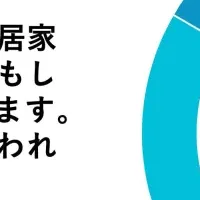
Innovative Thermal Imaging Technology Revolutionizes Neurosurgery Monitoring
Breakthrough in Brain Surgery Monitoring
Neurosurgery is a critical field where the stakes are incredibly high and the margin for error is razor-thin. A major challenge faced by neurosurgeons is obtaining real-time insights into cerebral blood flow, which is crucial for ensuring patient safety during operations. Conventional methods such as indocyanine green (ICG) fluorescence imaging rely on contrast agents, which can be limiting in terms of repeatability and safety.
The Promise of Infrared Thermal Imaging
A game-changing alternative is now emerging in the form of infrared thermal imaging technology. Unlike traditional imaging methods, infrared thermography provides a non-contact, contrast-free, and radiation-free diagnostic imaging option. This innovative technology enables continuous monitoring, allowing for enhanced surgical precision and improved patient outcomes.
Raytron Technology Co., Ltd. has taken a significant step forward in this regard, integrating thermal imaging cameras that can convert the subtle temperature variations resulting from cerebral blood circulation into high-resolution thermal maps. These maps provide neurosurgeons with the ability to visualize vascular flow that is otherwise invisible to the naked eye. By incorporating this technology into neurosurgical workflows, particularly during complex procedures such as cerebrovascular bypass surgeries, surgeons can conduct intraoperative monitoring without interruptions.
Case Studies from Real Life
In 2023, the First Affiliated Hospital of Ningbo University, one of China’s leading public hospitals, implemented Raytron's proprietary ATR1280 thermal imaging camera during life-saving bypass operations for patients suffering from moyamoya disease—a rare and serious cerebrovascular disorder. Under the leadership of Dr. Lin Jinghui, the surgical team recorded intraoperative infrared imaging on 21 adult patients undergoing STA-MCA (superficial temporal artery to middle cerebral artery) bypass surgery.
The results were compelling, showcasing several advantages over traditional imaging techniques:
1. Real-time, high-resolution thermal imaging that allows for better decision-making.
2. Clearer visualization of anastomotic blood flow, which is essential for successful surgical outcomes.
3. Seamless integration into the surgical workflow, reducing the complexity of monitoring during critical phases of surgery.
4. Enhanced quantitative accuracy in monitoring cerebral blood flow, further supporting informed clinical decisions.
These benefits mark a significant leap forward in thermographic imaging within neurosurgery, providing a platform for improved patient outcomes and more efficient surgical procedures.
Raytron's Vision for the Future
As a frontrunner in thermal imaging technology, Raytron is committed to expanding the potential of its innovative solutions across various industries beyond just healthcare. With a deep investment in research and development, and a robust patent portfolio consisting of over 1,200 patents, the company employs a workforce where nearly half are engaged in R&D efforts.
Raytron's mission goes beyond simply offering thermal imaging solutions. They strive to advance intelligent sensing technology that adds value across multiple sectors, including medical diagnostics, emergency responses, and beyond. The aim is to help humanity discover a richer understanding of the world through enhanced visual insights.
In summary, the advent of Raytron’s thermal imaging technology heralds a new era in neurosurgery. By equipping surgeons with tools that not only improve the accuracy of vascular assessments but also elevate overall patient safety and surgical precision, this technology is set to leave a profound mark on the field. As advancements continue, there is no doubt that the future of surgical monitoring will be brighter and more reliable with these innovations leading the way.
For more information on Raytron’s thermal imaging solutions, you can reach out to their marketing department or explore their offerings directly on their website.
Topics Health)










【About Using Articles】
You can freely use the title and article content by linking to the page where the article is posted.
※ Images cannot be used.
【About Links】
Links are free to use.